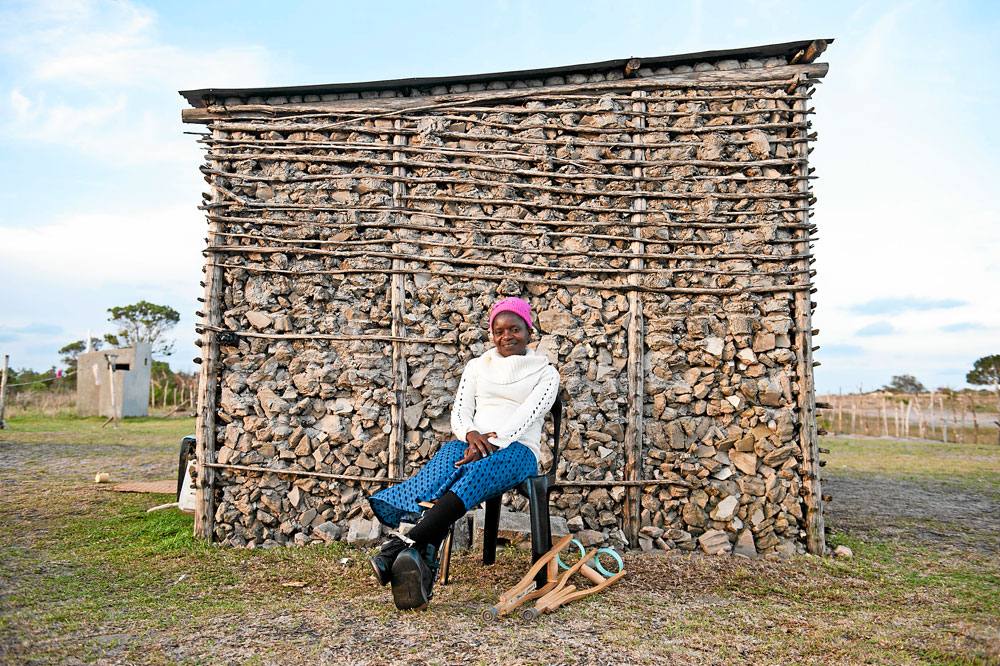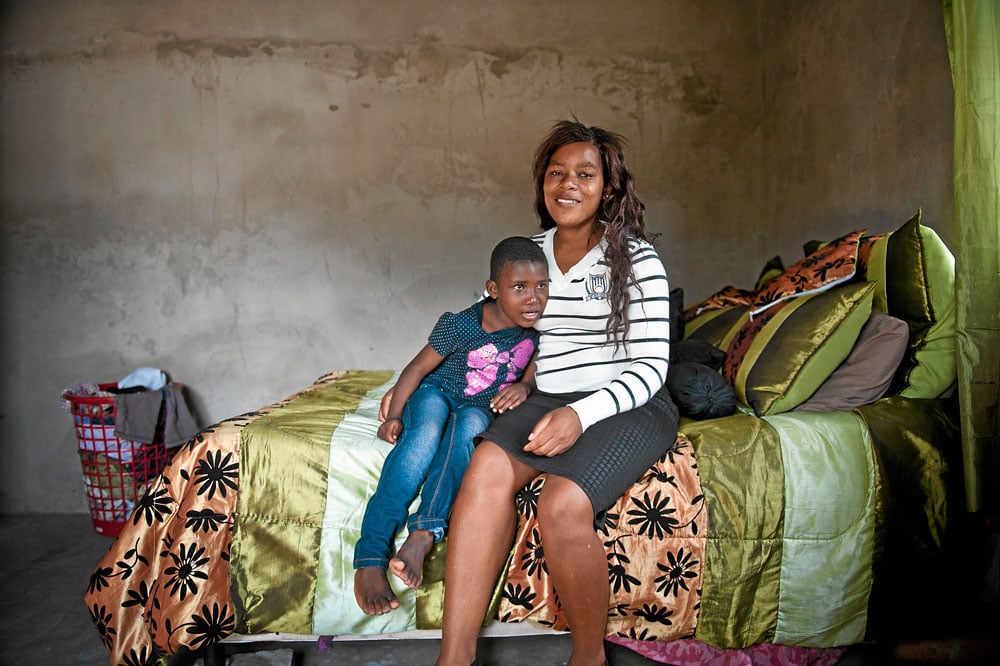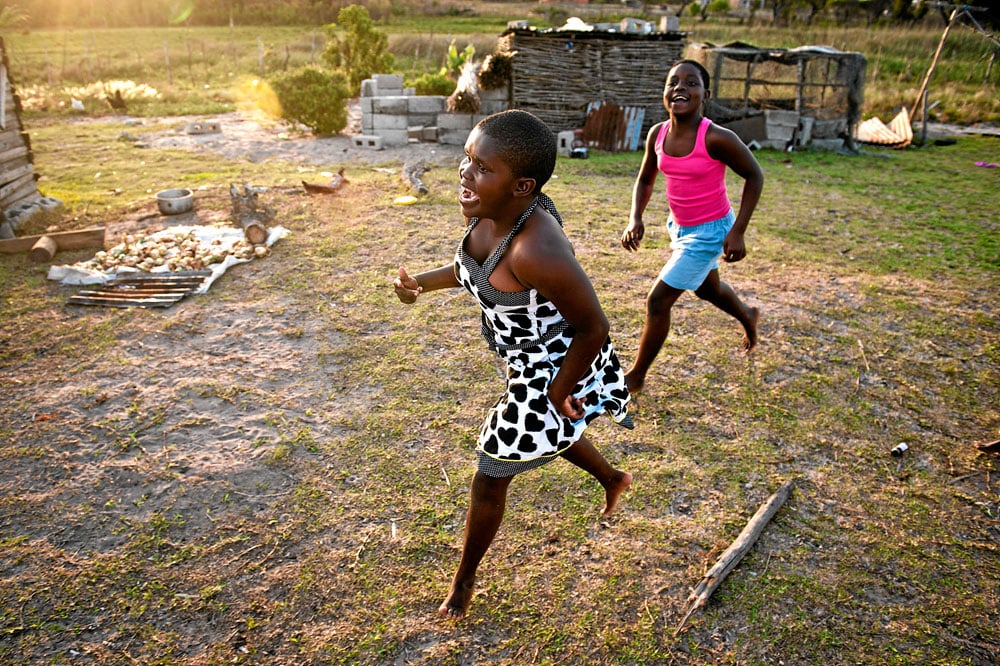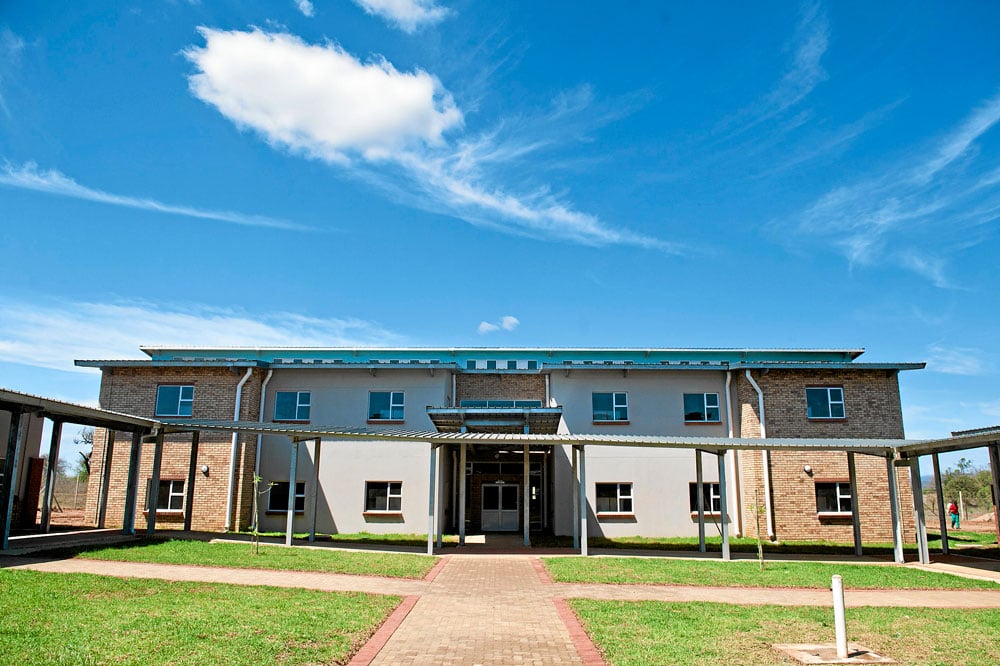Eight-year-old Boniswa Mthembu loves holidays and weekends, not because it’s a break from school but because it’s the only time he gets to play with other children.
He doesn’t go to school with the other children in his homestead, because he has a physical disability.
He plays the waiting game: waiting for the chance to go to school one day; waiting for the other children to come home every afternoon.
He is one of hundreds of children with physical and intellectual disabilities who live in the rural area near Manguzi in northern KwaZulu-Natal.
They languish at home because there are not enough special needs schools, Margaret Masinga, who is the secretary of the local Disabled Peoples’ Organisation, tells the Mail & Guardian on the way to meet the Mthembus.
Homesteads are dispersed and the roads are bad, Masinga says, so getting to the nearest special needs school would take hours of walking, and catching a taxi is unaffordable for many families.
The three special needs schools in the area would probably not enrol these children anyway because they reached their capacity years ago – such as Sisizakele Special School, which has a waiting list of more than 400.
The local ordinary schools are not much help either because they are already overcrowded, “so mothers give up and the children stay at home”, Masinga says.
Boniswa lives with his 30-year-old unemployed mother, Nonhlanhla Mthembu, and his retired grandmother in houses made of stones, mud and wooden poles. His cousins live nearby. There are no books, toys or a TV, so Boniswa follows his mother around all day as she cooks and cleans.
He can walk only with the help of a rudimentary walker, which he got from the Manguzi Hospital. The wheels at the back are missing.
When Boniswa was two years old, a doctor told his mother that he had a “muscle problem”. Now his legs are permanently bent at the knee and he walks on his tiptoes while leaning on the walker.
Mthembu is sitting on a log under a tree, frowning and waiting for Masinga to finish translating what she has just said to me.
“It’s stressful because he is always asking me: ‘Why am I not going to school?’”
She is wearing a red dress and, despite the humidity, a white cardigan. Every time I look at Boniswa, he smiles and looks down quickly.
He can’t read or write, and when I ask him to draw himself in the sand, he can’t do that either.
Mthembu tried to enrol him in Sisizakele last year but was turned away and the local ordinary school would not take him either.
A June report commissioned by rights organisation Section27 said that in 2012/2013 there were 17 169 pupils enrolled in 71 special needs schools that employed 496 teachers and teacher assistants.
The province had 73 “full-service schools” for pupils with and without disabilities. There were about 20 000 pupils, 150 teachers and assistants at these schools.
The spokesperson for the KwaZulu-Natal education department, Isaac Luthuli, says that this year the province has 73 special needs schools and 18 119 pupils.
He did not respond to questions about the number of teachers currently employed at these schools.
He also said there are 101 full-service schools, which accommodate all pupils –able-bodied and those with disabilities.

Margaret Masinga is the secretary of the local Disabled Peoples’ Organisation. (Delwyn Verasamy, MG)
The previous day Masinga was sitting on a low wall in Manguzi town under the white sky. It was overcast but hot and she was wearing a brightly coloured dress.
Many people here believe that disabled children will never grow up to contribute meaningfully to society, she told the M&G.
“But there is no such thing as a disabled child not being able to do this,” says Masinga.
She had polio as a child and walks with the help of crutches. She had been allowed to enrol in an ordinary school. Later she did a computer course and eventually got a job as a physiotherapist’s assistant.
Masinga is the secretary of the Disabled Peoples’ Organisation on her own and goes to schools to teach staff and pupils about disabilities.
She says there are not nearly enough special needs schools but that ordinary schools try to help. Some of them will accept a disabled child knowing they won’t be able to teach him or her, but that at least the child is socialising with other children. “There is a 23-year-old woman with an intellectual disability who is still doing grade four at a nearby ordinary school.”
Down the road from the Mthembus are the Khumalos. We sit on the family’s brown suede lounge suite, but seven-year-old Nelisiwe can’t keep still. She has epileptic seizures about twice a year, despite being on medication. Her mother, Esther, says she is intellectually disabled because of the seizures.
“The ordinary school she is at said she isn’t allowed back next year because teachers complain that she is aggressive with the other children … She breaks all the things, windows …”
Her mother tried to get Nelisiwe into Sisizakele this year but was told there was no space.

Esther Khumalo’s daughter, Nelisiwe, has epilepsy that resulted in an intellectual disability. (Delwyn Verasamy, MG)
An hour down the road in the opposite direction, we struggle to drive our hired car on the sandy road towards a third homestead.
After getting stuck twice, we return to Manguzi town. It is a glaring reminder of the transport struggles that local people face.
The next day we return in a borrowed 4×4 bakkie. There are no signposts and no cellphone signal.
It is lucky that Thandazile Moyale was already in Manguzi that morning and could drive with us to her home, where she lives with her physically and intellectually disabled daughter.
Minenhle (15) sits next to Masinga on the couch, shakes her arms above her head and laughs.
She is wearing loose jeans and a T-shirt that says: “Born to tweet”. It’s unlikely she will ever know what tweeting is or how to use this technology if she stays out of school.
She has epilepsy and when she “fits”, Moyale says, “she fits for the whole day”.

Minenhle Moyale (in black and white) are forced to languish at home because there are not enough special needs schools in the area she lives in. (Delwyn Verasamy, MG)
Minenhle walks bent over and her mother worries that she is in pain. “When we have to walk to the taxi, she bends over and puts her hands on her knees and that’s when I carry her.”
Minenhle must weigh at least 40kg.
Like all the other families, Moyale was told by every school she approached: no space. Minenhle now stays at home with her grandmother.
The problems faced by these mothers in trying to get their disabled children into school is endemic, so Masinga sent emails to Section27 earlier this year to ask for help.
Section27 researcher Muhammad Zakaria Suleman said the organisation had written to the provincial department on at least three occasions since the beginning of this year, “asking them to engage with us on how to address the situation”.
“We are now concerned that the children of the 17 clients we represent … who have applied … to attend Sisizakele Special Needs School [in] 2015 may be prejudiced by not being placed at Sisizakele or another appropriate school next year.”
Sisizakele is in Bhambanana, about an hour from Manguzi. The principal, Sophia Jood, walks with Masinga and me down the corridor of the new school’s pristine buildings. What started as a community project for disabled children in 2005 has blossomed into a R109-million school that serves 161 pupils.
But the province has provided only eight teachers, one teacher’s assistant and five other support staff, says the softly spoken Jood. She sighs. She looks tired. The school needs 17 teachers to be able to function properly.
“In some classes there are 31 children all with different disabilities with one teacher and one assistant … It’s criminal.”

The R109-million Sisizakele Special School in Bhambanana, outside Manguzi, does snot have enough staff to operate at full capacity. (Delwyn Verasamy, MG)
She says the school governing body pays small stipends to six house mothers and six teacher assistants. If the school had the right number of teachers, she says, it could accommodate 300 pupils.
Luthuli said the department’s head office of inclusive education was in discussion with the Umkhanya-kude district, under which Manguzi falls, “to facilitate accommodation … [for]school learners with disabilities”.
“Plans to rationalise and redeploy support staff in special schools where there are excesses are being discussed at the level of General Public Service Sectoral Bargaining Council.”
But the bargaining council is far from Manguzi.
Meanwhile, the disabled children are not being given the opportunity to at least learn to look after themselves.
As Moyale says about her daughter, Minenhle: “I worry because I wonder who will stand up for her if something happens to me.”
Special need for special teachers
A report commissioned by Section27, released in June, said there were 71 special needs schools in KwaZulu-Natal in 2012/2013, enrolling 17 169 pupils and employing 496 teachers.
Of these, 10 were remedial teachers, 158 were special needs teachers and 328 were teacher assistants/aides.
The report is called Brief Overview of Resource Allocation/Expenditure on Special Needs Education: Focus on KZN Department of Education and Sisizakele Special Needs School.
It said the acceptable ratio of disabled pupils to teachers should be 10:1, but “the pupil:teacher ratio is 34.6:1”.
The department had regularly reported vacancies for special needs teachers. The report said this was concerning because the number of special needs pupils were increasing “with minimal shifts in the number of educators employed”.
National figures are just as worrying as those for KwaZulu-Natal, but basic education department spokesperson Elijah Mhlanga said the department was committed “to [meeting] the needs of all pupils with disabilities over the next five years”.
He said 791 ordinary schools had been targeted for upgrading to become full-service schools and that there were 440 special schools in the country.
According to a report published by the Children’s Institute at the University of Cape Town, titled South Africa’s Progress in Realising Children’s Rights: A Law Review, there are “between 400 000 and 480 000 children with disabilities … out of school”.
It said that “more than 120 000 children with disabilities were in ordinary schools”, but that a 2006 survey had found that “97.1% … had no accessible toilets and 97.8% had no ramps”. Mhlanga said that “all schools will be made to comply with principles of universal design over the next 17 years”. – Victoria John
Impaired pupils ‘unknown to the department’
Jean Elphick is the national manager of the empowerment programme for children with disabilities at nongovernmental organisation, Afrika Tikkun.
She is trying to organise schooling for hundreds of disabled children in Orange Farm, Diepsloot and the inner city of Johannesburg.
Elphick warns that disability-related statistics are notoriously unreliable, and the figure of about 480 000 children not attending school is likely to be inaccurate.
“There are many reasons for this, not least the difficulty in defining and measuring disability, [and] this figure … was an estimate based on outdated data.”
Elphick has met many children in Orange Farm who “are unknown to the basic education department”.
This often happens when parents experience exclusion and are “turned away when they first approach their local school. The child is refused admission but not properly referred to the district-based educational psychologists for assessment and placement.”
In Orange Farm, the picture is very different from the one that the national department’s countrywide statistics paint, Elphick says. “Although it is said that more than 90% of children with disabilities are in school, our experience in Orange Farm is that just over 30% of children who should be in school actually are enrolled and are currently going to school.” She says that access to healthcare is harder in rural areas.
“Early identification, intervention and inclusion of children with any kind of impairment gives the best and most cost-effective outcomes.
This type of intervention often requires rehabilitation therapies on a regular basis, but at rural hospitals, and even in the cities, children are almost never able to reliably see a rehabilitation professional more than monthly.” – Victoria John